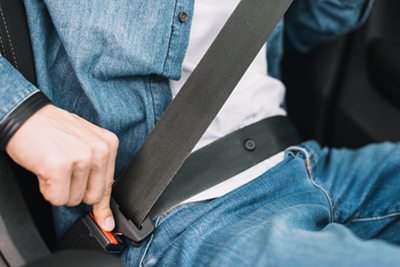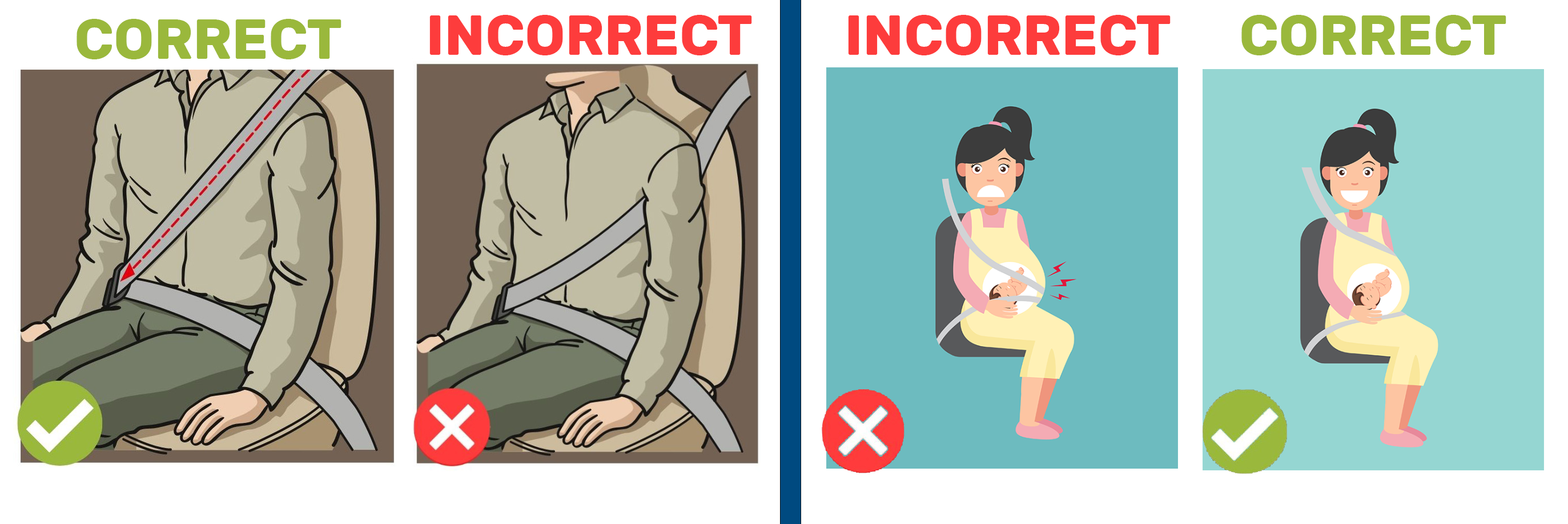
Seatbelt
Primary Passive Safety Device in Cars
Seat Belt is the primary safety device in cars, buses, trucks and other light and heavy motor vehicles. The Seat Belt increases the chances of survival of the occupants in the event of an accident. It has been estimated that seat belt reduces the risk of fatality for a front seat occupants by 50% and by 75% for the rear seat occupants. According to section 194 B(1) of the Motor Vehicles Act, it is mandatory to wear seat belt by the driver and passenger traveling in a motor vehicle. According to the accident statistics published by Ministry of Road Transport and Highways (MoRTH), more than 16,000 persons get affected due to non-use of seat belts out of which more than 7,000 people die in road accidents in India every year.
Many people have a misconception that if their car is equipped with air bags they are safe even if they are not wearing the seat belt. However, the truth is that air bags protect occupants only in case when the seat belt is worn otherwise air bags instead of protecting the occupants causes harm. Hence, the seat belt remains the primary safety mechanism. Air bag cannot supersede the function of a seat belt. At the time of collision seat belt keeps the occupant in position so that air bag could keep you safe.
How Seatbelt Protects During a Crash
- A properly worn seat belt increases chances of surviving a motor vehicle collision.
- Seat belt is meant to protect only one person. Sometimes people sit with a kid in their lap which do not protect the kid in an event of a crash.
- A typical seat belt assembly consists of a lap and shoulder belt. The shoulder belt should be worn closely against the body and over the shoulder and across the chest, never under the arm. The lap belt should be firm against the body and low across the hips.
- When air bags activate during a motor vehicle collision, they reduce the forward movement of the upper torso and minimize impact. They do not prevent drivers and passengers from being thrown out from the car.
- Seatbelts keeps the occupant inside and in control when the vehicle collides this protects them from having serious injuries. People who are thrown out from the vehicle have a much lower chance of surviving a collision.
- Seatbelts keep the head and body from hitting the inside of the vehicle or another person in the vehicle. When a vehicle hits an object, the people inside keep moving until something stops them. If a person not wearing seatbelt, in the case of collision he might hit the steering wheel, windshield, dashboard or another person which may lead to fatality.
- If there are kids in car and is not wearing seat belt or not using child car seat then they could fall down within the car due to sudden application of brakes.
- According to height and age of children it is recommended to use child car seat or a child restraint. According to research the seat belt and child car restraint are used appropriately then it could reduce the chance of fatality by 75%.
- According to the provisions of the Motor Vehicles Act, 1988 a child aged 14 years or below must wear seat belt or use a child restraint seat.

Penalty for Riding a Four-wheeler Without wearing seat belt
As per the provision defined in Motor Vehicles Act, 1988 the penalty for riding a four-wheeler without a seatbelt is as follows:
| Sec | Offence | Penalty |
|---|---|---|
| 194 B(l) | Driver or passenger without seat belt | Rs. 1,000/- |
| 194 B(2) | Carrying children below 14 years without safety belt/child restraint system | Rs. 500/- |


